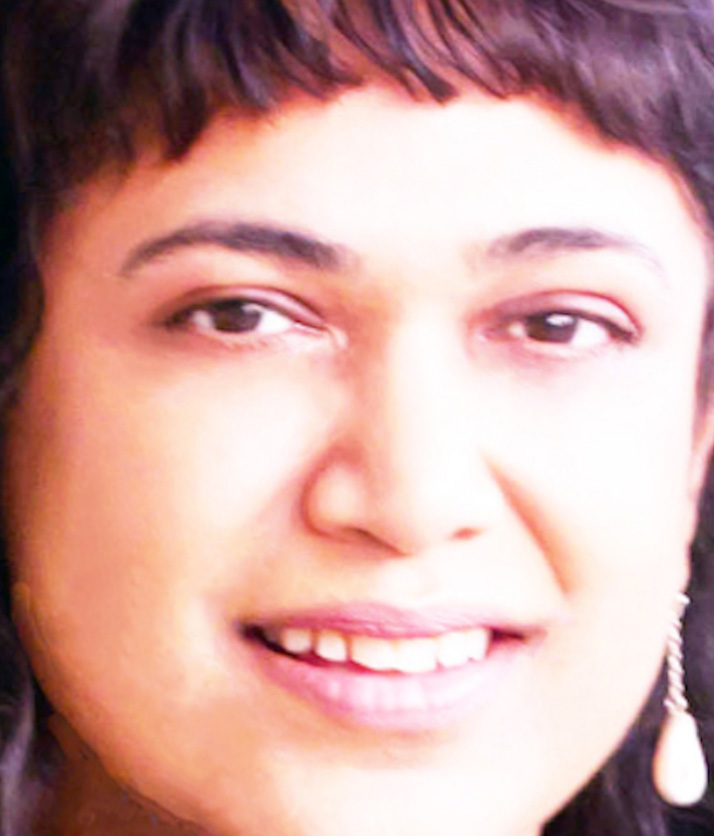Rina Little, Ph.D.
Ph.D., The Ohio State University, Columbus
Email: rina.little@ttu.edu
Phone:806.834.5718
I received my B.A. degree in Art History from the University of Maryland; my M.A. degree in Art History with a certificate in Museum Studies from University of Illinois; and my Ph.D. in Art Education from The Ohio State University. I have worked at the University of Texas-Austin, the University of Wisconsin-Milwaukee, and the University of North Texas, before joining Texas Tech University as an Associate Professor of Art Education in 2018. I also spent many years working at the Wexner Center for the Arts and other museums, where I used the contemporary arts as a means to explore ideas and concepts of relevance in wider cultural experiences.
Currently, I feel the arts are a site for experimentation that feels with the Anthropocene, providing creative strategies that may help cultivate sensibility. A sensitive attachment to materials in inquiries using visual making and creative writing makes knowledge relevant and responsive, holding space for different relations.
My research interest includes the posthuman and new materialisms as they relate to art, place, and wellbeing. Materials tend to be ignored as part of the background of human action dismissed in a preoccupation with consciousness or regulated to brute tools subordinated to human intention. My work is about learning through art materialities and practices and how it brings forth objects through social inter-relations and intra-actions. My articles are on why matter matters and how materials actively configure practice and knowing and have been supported by grants and disseminated through professional conferences. Practices of knowing are specific material engagements that participate in reconfiguring the world. For example, “The Lynden Sculpture Garden's Call and Response Program (CRP): To wonder, Encounter, and Emplace through the Radical Black Imagination” discusses how the program brings Black artists together to co-create in response to artworks made, performances enacted, and materials displayed at a site in Milwaukee, Wisconsin. The CRP makes the garden resonate differently with the public. The CRP cultivates alternative spatial experiences through material and social practices that speculate in tune to a Black presence, an important gesture in the city of Milwaukee where Blackness and space can be easily connected to dispossession. Theoretically the chapter brings together new materialisms, Black geographies and Afrofuturist aesthetics. Through these lenses, the chapter reflects on how art and social practice can generate alternative tellings and different spatial imaginaries of the world in which Black presence can be experiences in more undecided and diverse ways. Furthermore, through this research, I have written a related article on how race is not a taxonomic ordering but a way to study the movement between bodies, things and a changing environment in “Emergent Bodies: Rethinking Race and Racialization Through Materialities.” Race combines with words and things, chaining you to histories, geographies and potentialities. Moreover, I continue to write about alternative tellings using the health humanities, as in the chapter “From Empathy to Compassion: Embodying ‘The Yellow Wallpaper' through Interdisciplinary Learning,” which pairs creative writing and art making to call attention to social inequities related to identity and health and to facilitate subversive care by exploring benefits of activating creativity. Art here moves beyond a representational role or aesthetic object to a performative role, a transport station, or a working through, which offer potential healing through the imagined and the speculative.
In relation to museum education and public engagement, the work mentioned with the Lynden intersects with this category. Here, I explore the Lynden Sculpture Garden's mission of place-conscious art education in article “Building Place-Consciousness: An Art Museum and Its Entangled Relations.” Temporary outdoor work ranging from three-dimensional to performance and artists who work at the intersection of art and nature support the museum's interest in place-conscious art education. Place-based education is often associated with schooling, which offers learners authentic experiences with the local for the purposes of increasing engagement and achievement, while place-conscious education helps to build a conceptual framework that articulates an ability to engage socially with the politics of place. The investigation examines aspects of the museum's capacity to act as a shifting node in a network of relations and spaces and as a communicator of cultural knowledge.
Lastly, in relation to rethinking art curricula, I believe art production has been mysteriously shrouded under the cloak of the artist, typically considered as a creative, often solitary, expression. However, the article “Alfombra Making: Collaboration, Art, and Place” explores how collaboration and place impacts artmaking. I narrate a tale in the article describing the creation of an alfombra during Semana Santa in Antigua, Guatemala. The alfombra took the researchers and twelve university students several months to design and was installed through discussion, negotiation, problem solving, and collaboration. The process worked as a catalyst for collaboration and social engagement. We asked how alfombra making helped to unlearn patterns of thought and action that limit the potential for experiences in art, and with people and places.

Recent Articles and Book Chapters
In L. Trafi-Prats & A. Castro-Varela (Eds.), Participatory Arts-based Research in the City: Ontology, Aesthetics, and Ethics
Building Place-Consciousness: An Art Museum and Entangled Relations
Emergent Bodies: Rethinking Race and Racialization Through Materialities
Courses
Undergraduate
ARTE 3360: Introduction to Art Education
ARTE 4365: Visual Studies Seminar
ART 3372: Rethinking Art Education
Graduate
ART 5102: Teaching Art in Higher Education
ART 5360: Seminar in Art Education
Topics—1) New Materialisms: Art, Place, and Entanglement; 2) Current Trends in Art Education; 3) Social Practice, Museums and Communities; 4) Art, Bodies, and the Health Humanities; 5) Material Memory; 6) Rest+or+ation; 7) Uprooted; 8) Place-Conscious Art and Education: Wandering, Encountering, and Dwelling; 9) Art, Self and Place)
ART 5361: Critical Pedagogy in the Visual Arts
ART 5363: Research Methods in the Visual Arts (Arts-Based Research)
ART 6001: Professional Project
ART 6002: Exhibition Project
ART 7000: Independent Study
ART 8000: Dissertation
VPA 5300: Arts Practice-Based Approaches to Research
School of Art
-
Address
3010 18th Street | Box 42081, Lubbock, Texas 79409 -
Phone
806.742.3826 -
Email
art.info@ttu.edu
